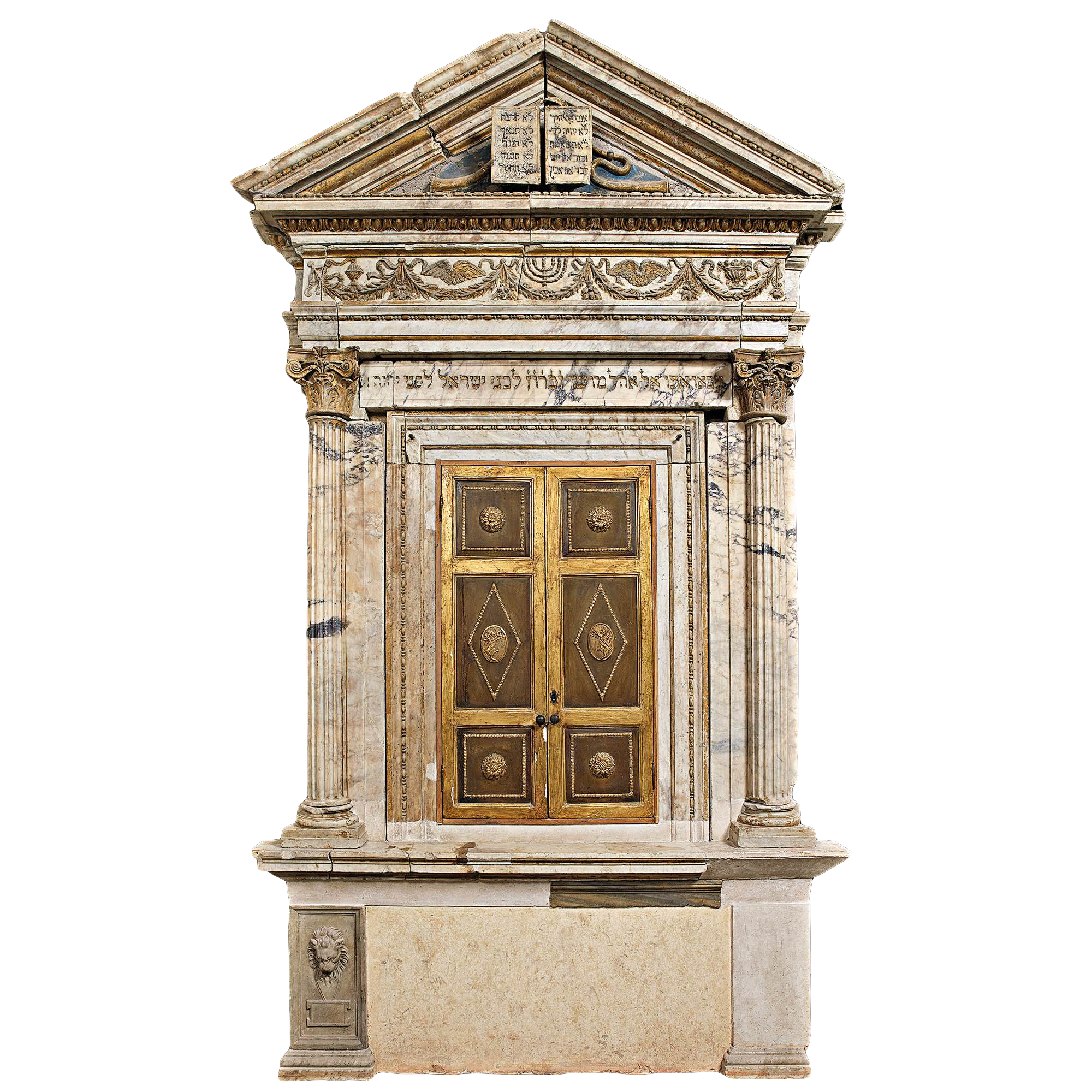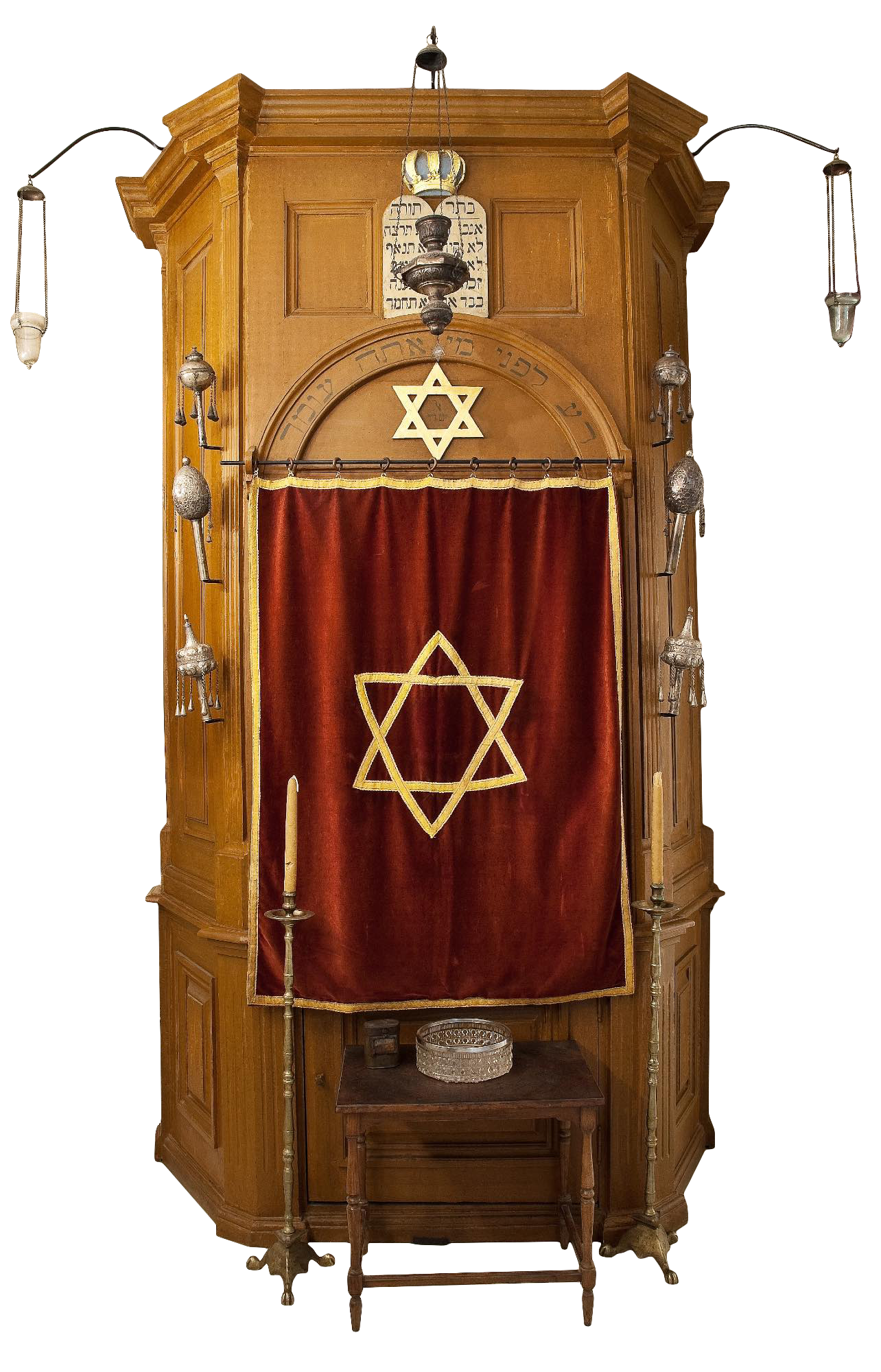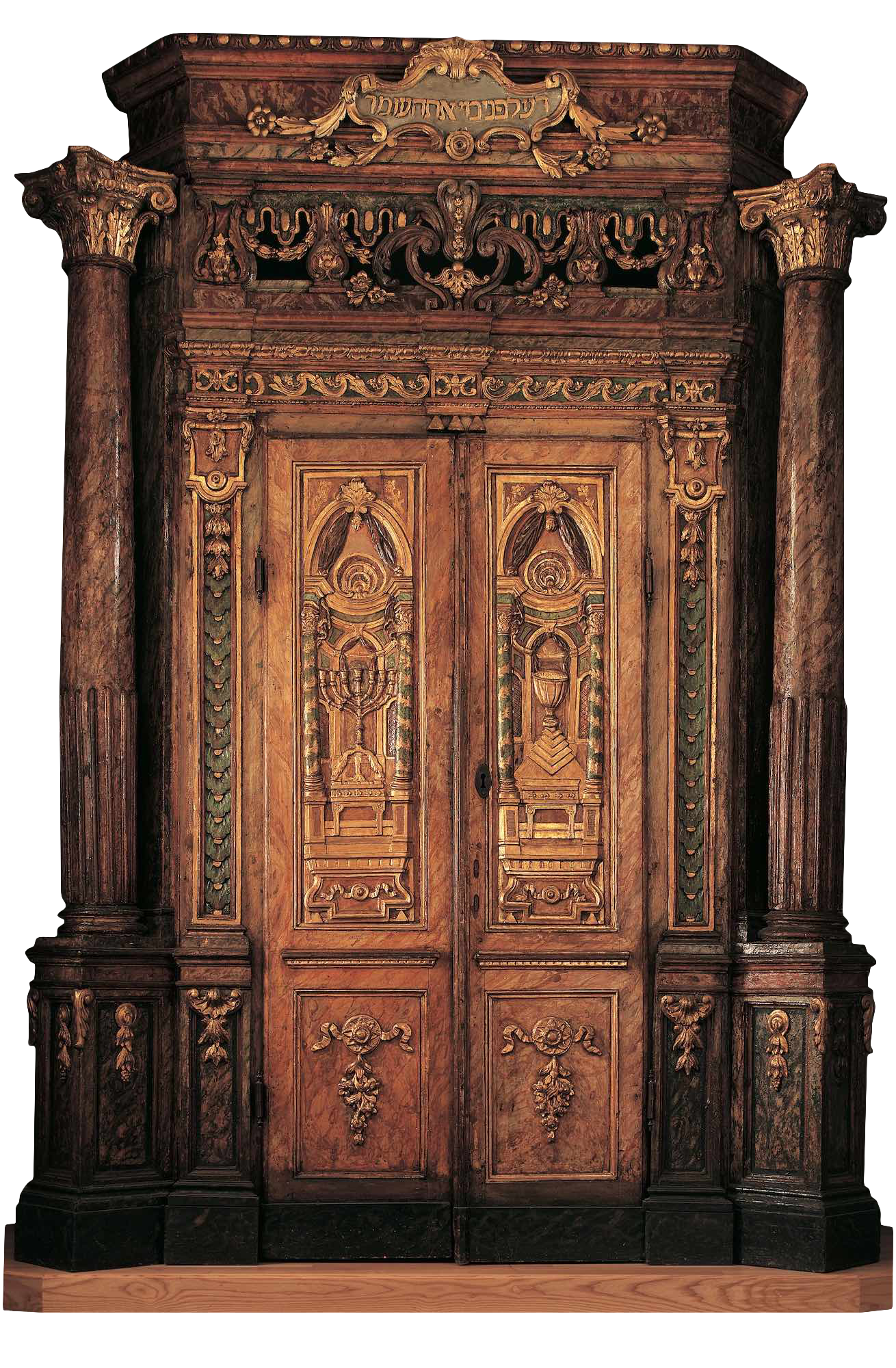(aron hakodech)

Armoire placée dans le renfoncement d’un mur ou contre un mur de la synagogue. Elle contient les rouleaux de la Torah, et la prière est donc dirigée vers elle.





The Torah ark located in the prayer room of the Subotica Jewish community building, Serbia.
Cassuto, David. “The Architectural Design of Torah Arks in Italy.” Towns of Silk and Silver: Architectural Motifs in Italian Art, edited by Andreina Contessa, Jerusalem: U. Nahon Museum of Italian Jewish Art, 2013.
Fishof, Iris. “[A Pair of Torah Ark Doors from Kraków]” Kroke-Kazimiez-Keaków: Mechkarim Be-Toldot Yehudei Kraków [Kroke-Kazimierz-Kraków: Studies in the History of Kraków Jewry], edited by Elchanan Reiner, Tel Aviv: Tel Aviv University, 2001, pp. 293-8.
Nahon, Salomo U. Sixty-Four Pictures of Holy Arks and Religious Appurtenances from Italy in Israel. Jerusalem: Department for Torah Education and Culture of the World Zionist Organization, 1970.
Piechotka, Maria, and Kazimierz. “Aron ha-kodesz w bóżnicach polskich: Ewolucja między XVI I początkiem XIX wieku [The Holy Ark in Polish Synagogues: Evolution Between the 16th Century and the Beginning of the 19th Century].” The Jews in Poland, ed. A. Pałuch, vol. 1, Kraków, 1992, pp. 475-81.
Rodov, Ilia M. The Torah Ark in Renaissance Poland: A Jewish Revival of Classical Antiquity. Leiden: Brill, 2013.
Weber, Anette. “Ark and Curtain: Monuments for a Jewish Nation in Exile.” Jewish Art, ed. Aliza Cohen-Mushlin and Bianca Kühnel, vol. 23/24: The Real and Ideal Jerusalem in Jewish, Christian and Islamic Art, no. 2, 1997-1998, pp. 89-99.
Yaniv, Bracha. The Carved Wooden Torah Arks of Eastern Europe. Liverpool: The Litman Library of Jewish Civilization and Liverpool University Press, 2017.
Sélectionner une langue